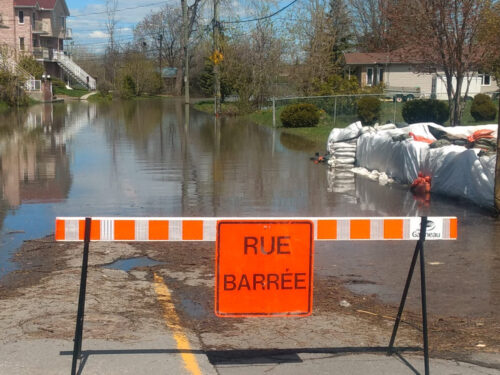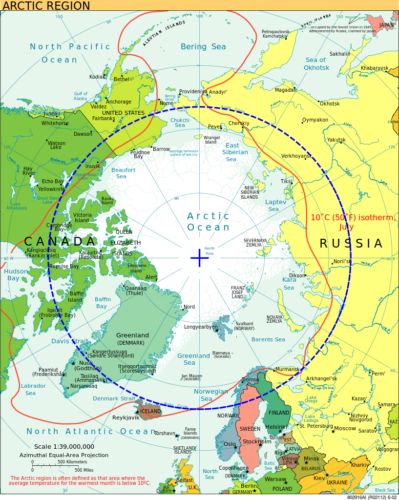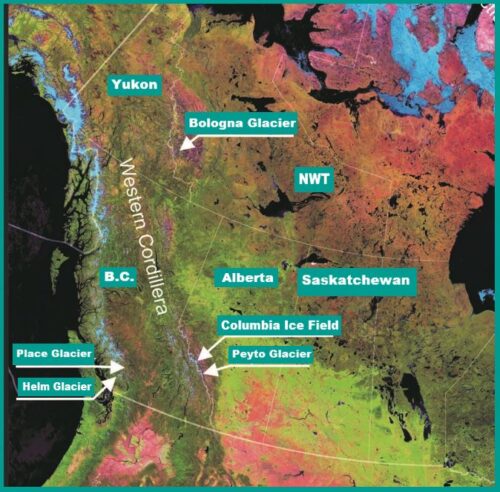Improving Canada’s Civil Defence Can Strengthen Our Climate Resilience Too
In Canada, we are going through the most consequential federal elections in generations. Although the campaign has just started, issues of economic and political sovereignty, and national security and defence spending might take precedence over many other topics — such as climate change.
Our country is vast with a rugged terrain and an often difficult or even dangerous climate. Given these challenges, our Canadian Armed Forces (CAF) can’t be everywhere no matter how much taxpayer money is spent.
Additionally, climate change impacts and disasters are putting increasing strain on the CAF. Climate change is already “affecting the frequency, duration, and intensity of Canadian Armed Forces operations, both at home and abroad, placing unprecedented demands on…resources [so they] are increasingly integrating climate considerations into…equipment, infrastructure, and operational planning,” according to the report Impact of Climate Change on CAF Operations, from Standing Senate Committee on National Security, Defence and Veterans Affairs (SECD) – Arctic Security, released in April 24, 2023.
When Canadian politicians and parties are making promises to voters about improving our national defence and security, they would do well to acknowledge these “ground truths”.
Our continued freedom may depend not just on large and sustained investments into the armed forces, but also on improving our civil defence capacity and capabilities.

Photo taken by Nicholas Kellett, Ottawa-Gatineau 2024
Why any efforts to increase Civil Defence should also improve Climate Resilience
The good news is that many of the necessary investments and measures to improve civil defence this are highly complementary with climate resilience efforts.
Generally, resilience activities require us to assess exposure, vulnerability, and impact from physical threats and hazards. Having assessed the risks, we need to plan, prepare and respond if those risks are realized. Our planning and actions must focus on stabilizing a dangerous situation and minimizing harms and threats to lives and property. To do that, we must arm ourselves not only with knowledge and information, but with appropriate tools and data to act in an effective and coordinated way. Our tools must be durable, redundant, and function in complex and fast-changing situations. And we must protect those most vulnerable.
Everything described above applies equally well to climate resilience as to civil defence. Civil defence planning may also include firearms and military reserve training, but any activities that protect against climate threats will be non-violent.
How do we build resilience, generally?
Here are examples of general resilience-building outcomes:
- Improving individual and community awareness of possible and likely threats.
- Operating resilient communication networks, including satellite comms and ham radios to redundantly and reliably share truthful and life-saving information in a crisis.
- Ensuring Canadians know practical skills like first aid, basic shelter construction or repair, and how to act as first responders.
- Enabling communities to quickly and efficiently pool resources like shelter, fuel/electricity backups, distribute food and medicine for humans and pets,
- Strengthening community networks to improve communications and public awareness, and to carry out regular wellness checks on the vulnerable.
In Canada, there are a handful of climate disasters that bring the most risk to lives and property. These are floods, wildfires, and extreme heat conditions. In all such cases, there are some very simple, specific and inexpensive measures that can immediately reduce the risk and impact of these disasters.
Intact Centre on Climate Adaptation has some excellent infographics, which illustrate the point. We should be teaching them to all our citizens!
How is this topic ‘geospatial’?
We will certainly benefit from nationwide resilience-building initiatives and common standards, but the most useful efforts will likely be regional or even hyper-local!
The (often multiple) geography and jurisdiction in which a disaster or threat may occur will strongly affect the local availability of food, medicine, shelter materials, and insurance coverage. This will also determine which laws and structures can assist or affect our efforts, and may even decide the extent and timelines of public safety preparedness, response and recovery efforts. A flood in a northern community could have very different consequences than one downtown in a southern city.
The specific location and context of an unfolding disaster will determine what information is relevant to responders and to those affected. For instance, emergency shelters, trusted sources of emergency news, sandbag and supply depots, and call signs of ham radio operators are examples of geospatial datasets that may be highly relevant but not all knowable before a precise disaster hits.
Therefore, resilience efforts cannot ignore the geographical location in which they are taking place. If information is missing or cannot be prepared ahead of time, then the geospatial community members can help ensure it can be gathered quickly, for instance by helping set metadata standards, processing workflows, or providing common data templates and tools.
What we should be demanding?
This is just scratching the surface of what we should probably be doing — but it brings us back to the federal election.
Over the next 30-some days, we will probably have multiple chances to speak to and hear from our local political candidates and national party leaders. Preserving our economic and territorial sovereignty may be top of mind and swamp other topics.
As voters, we have a golden opportunity to tie such discussions to the ongoing and increasing risks of climate change. Let’s ask the candidates how the promises they make might be used to not only strengthen Canada’s civil defence but also increase the ability of our people, our communities, and our infrastructure to resist climate threats and disasters.
And, as members of Canada’s geospatial community, let’s take this unique moment in our nation’s history to reflect on what a stronger, more resilient future might mean for our country, and how geospatial technology, tools, and data can be used to improve our nation’s resilience against climate change as well as other threats on the horizon.
Together, let’s stay strong and free!







